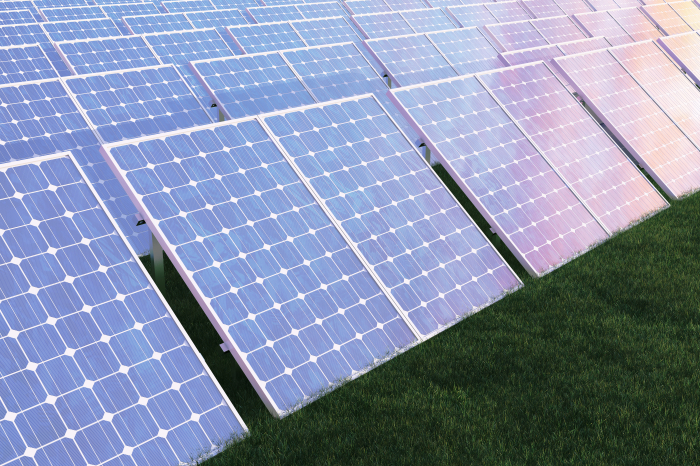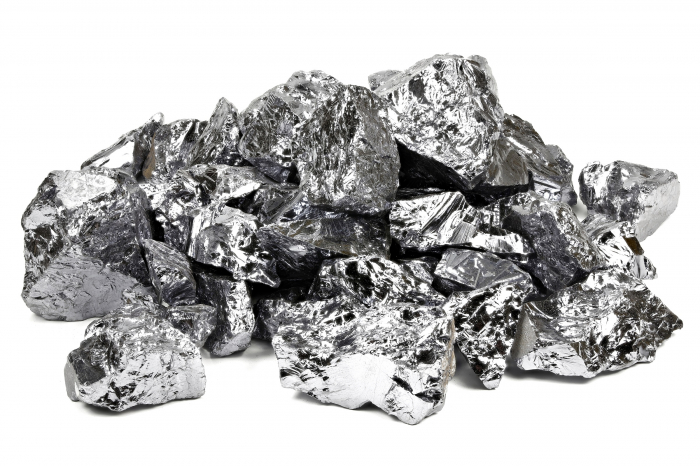Earnings
OCI swings back to profit as polysilicon prices surge
The world's No. 7 polysilicon maker considers doubling polysilicon output in Malaysia
By Feb 21, 2022 (Gmt+09:00)
2
Min read
Most Read
LG Chem to sell water filter business to Glenwood PE for $692 million


KT&G eyes overseas M&A after rejecting activist fund's offer


Kyobo Life poised to buy Japan’s SBI Group-owned savings bank


StockX in merger talks with Naver’s online reseller Kream


Meritz backs half of ex-manager’s $210 mn hedge fund



OCI Co., the only polysilicon maker in South Korea, is considering doubling its output of the solar cell material in Malaysia to meet rising demand, after it swung to an operating profit last year.
Operating profit came to 626.1 billion won ($522 million) in 2021, its best annual results in a decade since it posted a record operating profit of 1.1 trillion won in 2011.
Nearly 80% of the 2021 earnings, or 487 billion won, were derived from its basic chemical business, which makes its main product polysilicon. Polysilicon is a raw material used to make photovoltaic cells for semiconductor wafers and solar panels.
"Our Malaysian operations have a debottlenecking plan this year. Moreover, we are seriously considering expanding our output by 30,000 tons," OCI Vice Chairman and co-CEO Lee Woo-hyun told an earnings conference on Feb. 8.
Its output expansion will be conditional on securing more long-term contracts and the market situation, Lee added. But the vice chairman forecast the polysilicon shortage to persist this year.
According to OCI, solar panel installations in 2022 are projected to increase by 18-29% on-year globally to 200-220 gigawatts of electricity.
Bottlenecking refers to the process of improving production efficiency by identifying specific areas or equipment in facilities that limit the flow of products.
OCI, the world's seventh-largest polysilicon manufacturer by output, has been in the red for years due to depressed prices, since Chinese competitors mass-produced low-priced polysilicon from the 2010s.
Hit by the declining price, OCI has cut its production by more than half to 30,000 tons of polysilicon per year from 80,000 tons, sliding to seventh place from third in terms of polysilicon output.
It has been producing the material only in its Malaysian plant since shutting down its domestic facilities in Gunsan, southwest of Seoul, in early 2020.

SEVENFOLD JUMP IN PRICE
The price of solar polysilicon has climbed sevenfold to $34 per kilogram as of mid-February, compared with $5 in May 2020, according to industry sources on Feb. 20.Its price has steadily increased from less than $10 per kg at the end of 2020 to $20 early last year and then exceeded the $30 mark in the second half of last year.
The price is now far above OCI's breakeven point of $7-$8, thanks to a surge in solar panel installations in line with global efforts for carbon neutrality and the pursuit of renewable energy.
The polysilicon business generated an operating margin, or an operating income to net sales, of as much as 36.5% for OCI last year.
Analysts said the South Korean company has financial capabilities enough to expand its output. OCI has 1 trillion won in cash, cash equivalents and other short-term financial products as of end-September 2021, a 60% jump from its holding of 638.2 billion won at end-2020.
Shares in OCI added 2.54% to 96,800 won by midday, still 40% below its three-and-a-half-year peak of 169,000 won scraped in October 2021.
Write to Kyung-Min Kang at kkm1026@hankyung.com
Yeonhee Kim edited this article
More to Read
-
 Battery materialsPOSCO Chem, OCI to produce previously imported battery material in Korea
Battery materialsPOSCO Chem, OCI to produce previously imported battery material in KoreaAug 26, 2021 (Gmt+09:00)
1 Min read -
 EarningsPolysilicon drives up OCI’s Q2 profit to 10-year high amid solar cell boom
EarningsPolysilicon drives up OCI’s Q2 profit to 10-year high amid solar cell boomJul 28, 2021 (Gmt+09:00)
3 Min read -
 Solar cell materialsKorea’s OCI to return to highest profit in decade on rising polysilicon prices
Solar cell materialsKorea’s OCI to return to highest profit in decade on rising polysilicon pricesMay 30, 2021 (Gmt+09:00)
4 Min read
Comment 0
LOG IN


